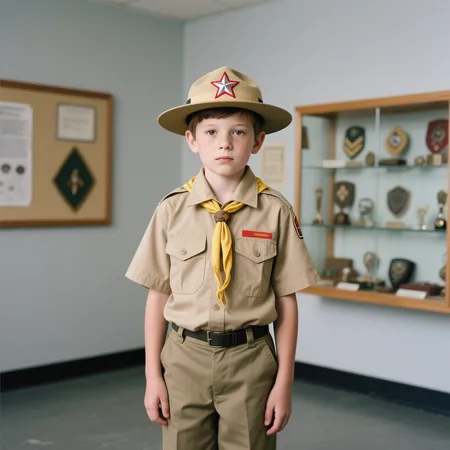For parents and scouts alike, understanding boy scout patch placement can often feel confusing. Between merit badges, council patches, and troop numbers, it’s easy to mix things up. But proper patch placement isn’t just about looking sharp — it also reflects your scout’s accomplishments and progression through the scouting journey. In this guide, we’ll help you navigate where each patch belongs, how to attach them correctly, and some helpful tips to keep your scout uniform looking its best.

Why Patch Placement Matters
The Boy Scouts of America (BSA) has detailed uniform standards that every scout is expected to follow. Patches are a visual representation of hard work, leadership, and participation. When patches are incorrectly placed, they may not be officially recognized and can make the uniform appear disorganized. Ensuring proper patch placement is a mark of respect — not just for the scouting organization but also for the time and effort scouts have put into earning them.

Understanding the Boy Scout Uniform Layout
Before placing any patches, it’s essential to understand the structure of the scout uniform. The most common uniform piece that displays patches is the Class A shirt, a tan button-up typically worn for meetings, ceremonies, and official events. Let’s explore the primary patch locations:
1. Left Sleeve
- Council Shoulder Patch (CSP): This goes at the very top of the left sleeve, just below the shoulder seam.
- Troop Numbers: Placed directly below the council patch.
- Badge of Office: If your scout holds a position like Patrol Leader or Senior Patrol Leader, this patch is placed below the troop numbers.
- Trained Patch: If the scout (or adult leader) has completed training, this small rectangular patch is placed directly below the badge of office.
2. Right Sleeve
- American Flag Patch: This is pre-sewn on most uniforms and sits at the top of the right sleeve.
- Patrol Emblem: If your troop uses patrols, this round patch is placed about midway down the sleeve.
- Camporee or Special Event Patches: These are optional and go below the patrol emblem, though only one is typically worn at a time.
3. Left Pocket
- Rank Badges: Centered on the left pocket, this patch represents the scout’s current rank.
- Arrow of Light: For scouts who earned this in Cub Scouts, it goes below the left pocket.
4. Right Pocket
- Temporary Patches: These can include event patches, campouts, or other achievements and are worn centered on the pocket, often with a button loop. Only one should be displayed at a time.

Tips for Sewing and Attaching Patches
When considering where to sew scout patches, consistency is key. While iron-on backing is available on some patches, sewing is the preferred method due to durability — especially for active scouts. Here are a few best practices:
- Use clear thread or a thread that matches the border of the patch.
- Stitch securely around the edges to prevent curling or detachment.
- Double-check placement before sewing; removing a wrongly placed patch can damage the uniform fabric.
For families that don’t want to sew, badge adhesive kits or professional patch placement services can also be helpful.
Printable Patch Guides and Resources
To ensure accuracy, always refer to an official scout uniform patch guide. Most councils provide printable PDF diagrams that show exactly where each patch should go. These guides are especially useful when preparing for boards of review, courts of honor, or regional events.

Encouraging Scouts to Take Ownership
Teaching scouts how to attach their own patches (with adult supervision) is a great way to foster responsibility and independence. It also helps them take pride in their accomplishments — seeing each badge as a reflection of their growth and hard work.
Final Thoughts
Understanding boy scout patch placement may seem daunting at first, but with a little guidance, it becomes second nature. By following official guidelines, using a scout uniform patch guide, and knowing where to sew scout patches, you ensure your scout presents themselves with confidence and respect.
A well-maintained uniform isn’t just about looking good — it’s a badge of honor in itself.



